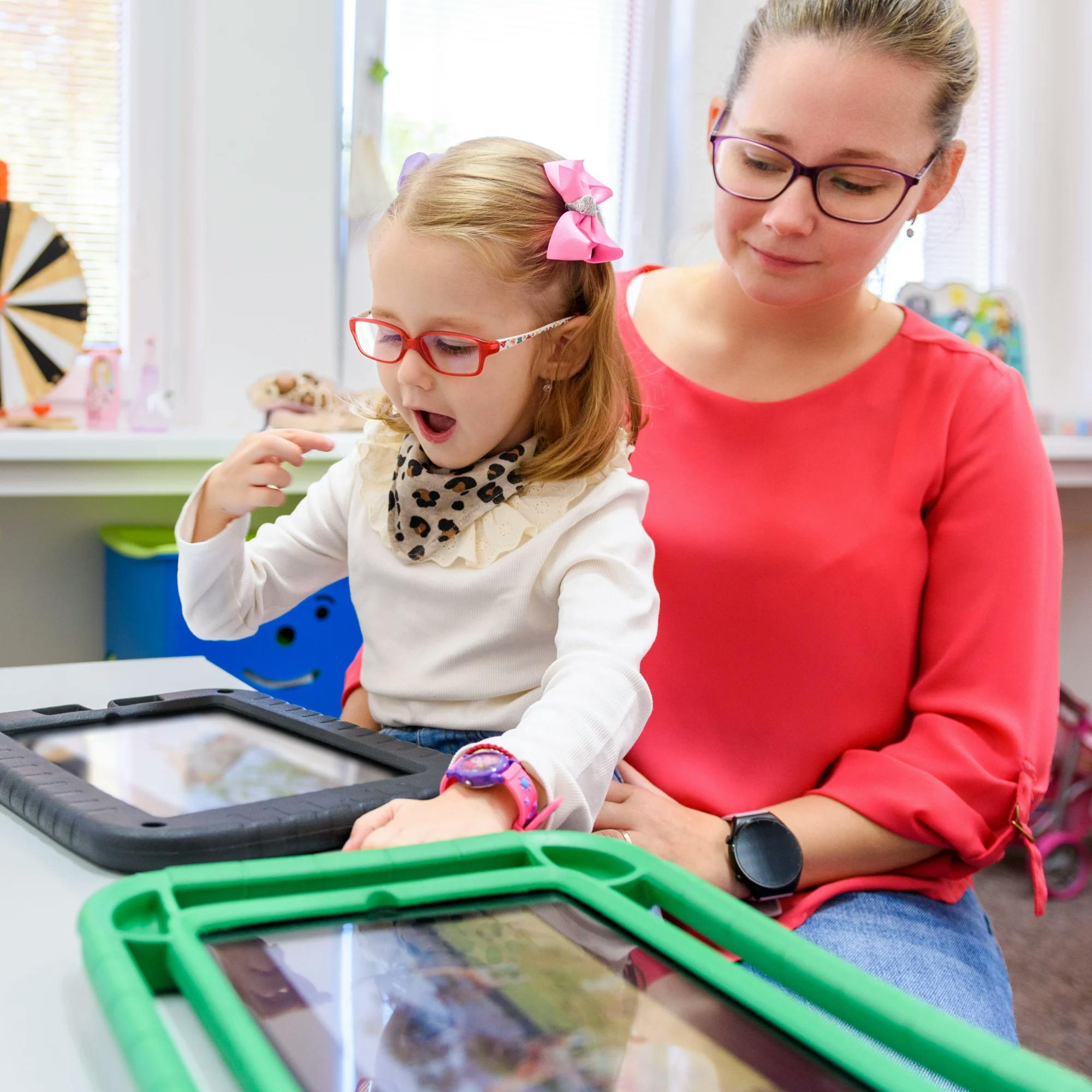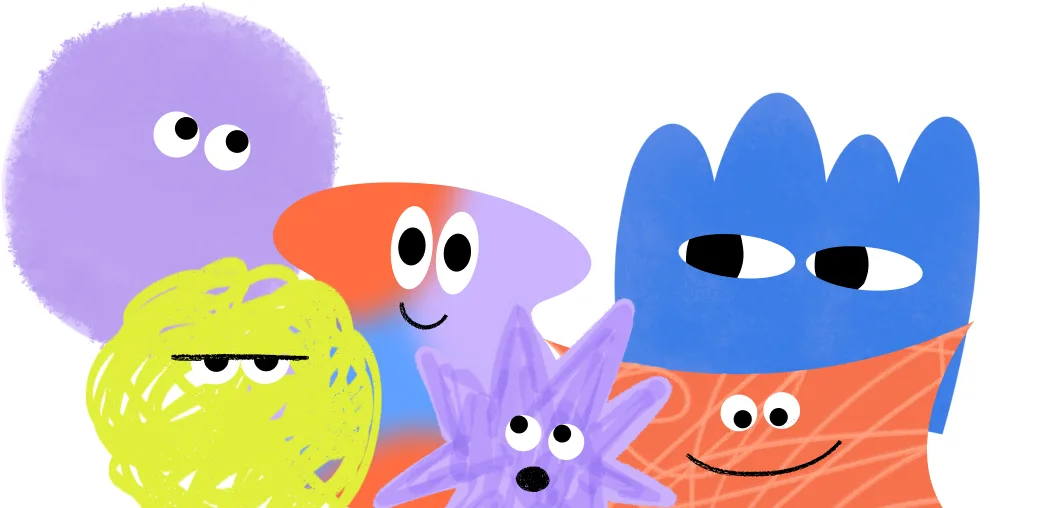Communication is more than simply being able to speak. Ed Riefenstahl is a perfect example of how resilience and innovation can help someone reclaim their voice. His journey—from a traumatic brain injury to embracing artificial intelligence (AI) technology—shows the power of determination and the impact of speech therapy in transforming lives.
One moment changes everything
Ed Riefenstahl is the Director of Experiential Learning at Texas Christian University’s Neeley School of Business. He is a teacher, a mentor, a husband, and a friend. Known for his passion for education and his engaging teaching style, Ed has always thrived in the classroom, inspiring students through his words and presence.
However, everything changed on July 5, 2021, when Ed fell from a ladder and suffered a traumatic brain injury (TBI). His recovery was intense, with months of therapy and rehabilitation. Over time, Ed regained his ability to teach, a testament to his resilience. Yet, in late spring 2023, almost two years after his TBI, his journey took an unexpected turn.
The unexpected diagnosis
Ed’s wife, Valerie, was the first to notice a change. “Have you noticed something about your voice? It doesn’t sound as clear to me,” she observed. Ed had noticed he could no longer sing along to the radio—something he had always enjoyed. This small but significant shift marked the beginning of a new challenge.
Multiple doctor visits, MRIs, and tests later, Ed was diagnosed with bulbar palsy, a neurological condition affecting speech, swallowing, and muscle control in the face and jaw. His doctors believed the TBI had triggered this progressive disease. The prognosis was daunting: His speech would not improve and might continue to deteriorate.
Determined to communicate despite the challenges, Ed turned to alternative methods. He used a dry-erase board to write words, as well as devices that turned typed text into speech, all so he could continue teaching his students. However, the robotic nature of the speech on these devices left him yearning for something more—something that felt like him.


Partnering with a speech therapist to explore new options
In 2023, over two years after his injury, Ed sought speech therapy through Expressable. He began working with speech-language pathologist (SLP) Karyn Hamson in October of 2023. Karyn guided Ed through exercises to improve his enunciation and adapt to his changing speech abilities. By January 2024, it became clear that the bulbar region of his brain stem was affecting the neural pathways controlling his mouth, lips, tongue, and throat.
Karyn recalls, “When Ed and I first began working together, we focused on exercises to increase his ability to be understood by others. As time went on and Ed received more information on his condition, it became clear that we would need to explore other means of communication. Ed's speech became increasingly difficult to understand and presented as slurred, nasal sounding, and monotone.
Throughout this journey, Karyn became more than just a speech therapist—she became Ed’s advocate and cheerleader.
“During this time, Ed also experienced difficulty swallowing foods of certain textures. I suggested he participate in a modified barium swallow study (MBSS) as I suspected he would also need to modify his eating and drinking to avoid aspiration.”
Throughout this journey, Karyn became more than just a therapist—she became Ed’s advocate and cheerleader. She encouraged him to explore different tools to support his communication, including augmentative and alternative communication (AAC) devices with programmable phrases. AAC is a valuable tool for people of all ages who are unable to communicate through speech. This includes people with a range of conditions, including autism, cerebral palsy, stroke, and neurodegenerative diseases.


A voice–and an identity–restored
Then, a breakthrough moment arrived. Ed learned about a congresswoman, Jennifer Wexton, who had used AI voice cloning to reclaim her ability to speak naturally after she was diagnosed with progressive supranuclear palsy. Inspired, he researched and connected with ElevenLabs, a company specializing in AI-generated speech. Using old recordings of Ed’s voice, ElevenLabs created a digital replica that captured his natural cadence and tone.
In early August 2024, Ed heard his own voice again for the first time in years.
The moment was emotional. “We started laughing and crying at the same time because we didn’t think we’d ever hear his voice again,” Valerie recalled.
Ed regained more than just a way to communicate—he reclaimed a part of his identity.
Here, you can hear how Ed’s current speech sounds, as well as the progression of his voice through AI-cloned samples that replicate how he used to sound before his accident.
With his restored AI-generated voice, Ed regained more than just a way to communicate—he reclaimed a part of his identity. The technology allowed him to teach with confidence again, interacting with students in a way that felt familiar and true to who he was before his injury.
‘Capturing the essence of Ed’
Karyn continues working closely with Ed, helping him integrate his AI-generated voice into his AAC device, practice speech and swallowing exercises, and navigate the evolving landscape of assistive technology. Her dedication ensures that Ed has the tools and support he needs to adapt and thrive.
Karyn states, “Working with Ed has been one of the most rewarding and inspiring experiences of my career as a speech-language pathologist. Ed's tenacity and sense of humor have been remarkable to witness, and I treasure the time we spend together in our sessions.
'My goal for Ed has always been to continue pursuing connection through communication by any means necessary.'
“When communication is difficult, it can feel isolating. My goal for Ed has always been to continue pursuing connection through communication by any means necessary. We have discussed a lot of options, both low tech and high tech. All of them are great, but when it comes to authenticity, nothing can beat the AI-generated voice that captures the essence of Ed.”
Connection through communication
Ed’s journey is a testament to determination, innovation, and the power of technology in overcoming barriers. “Hearing yourself speak again is transformational,” Ed shared. “I hope others who have similar symptoms or disabilities will be able to receive the gift I received.”
As he continues adapting to life post-injury, Ed remains optimistic. “I hope my story can inspire others to explore the possibilities of technology and what it can do for them. With the right tools, we can overcome even the toughest challenges.”
Ed’s story highlights the profound impact of AI and AAC technology on the ability to communicate. It also proves that communication is more than verbal speech. It’s about connection, identity, and the ability to share your voice with the world–in whatever form that takes.
Photo credit: TCU Neeley School of Business

 Alexis Irazoque, M.S., CCC-SLP
Alexis Irazoque, M.S., CCC-SLP









